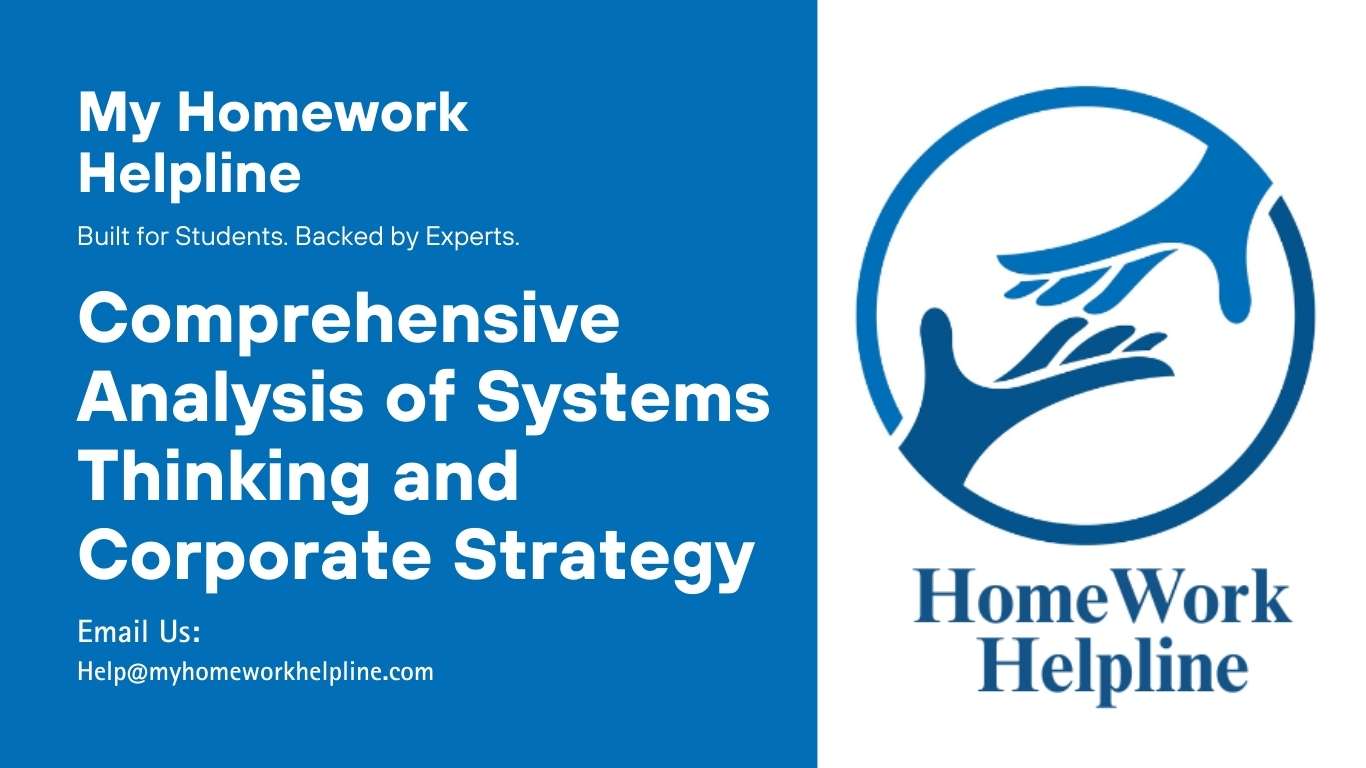Systems Thinking and Corporate Strategy: Enhancing Business Success
Corporate Strategy is a term defining clear set objectives and long-term plans for a business (Grewatsch et al.,2023). Corporate strategy is central in business for the creation of organizational value and in motivating workers to achieve their objectives. On the other hand, system thinking is a term used to describe a holistic approach to investigating interactions and factors that are likely to contribute to a given outcome (Grewatsch et al.,2023). The paper entails an exploration of system thinking and corporate strategy to determine why they are effective in business management.
Companies use different corporate strategies to achieve an outcome. According to Beynon-Davies (2019), corporate strategies include retrenchment, stability, growth, and reinvention strategies. Growth strategy is vital in assisting organizations to grow in size, revenue, sales, and gain a wide consumer audience. Stability strategy plays a role in maintaining success and focusing on consumer satisfaction. Retrenchment strategies are central in ensuring organizations make changes to allow for improvement. Reinvention strategies are employed when organizations are required to reinvent and reassess themselves.
Corporate strategies and system thinking entail critical thinking and systemic structures. Systemic structures are essential in data collection and behavior monitoring required to propose changes in corporate strategies (Schlüter et al., 2023). System thinking is used in the creation of efficient corporate strategies.
If you’re preparing an assignment on systems thinking and corporate strategy, our academic experts can help you craft high-quality, well-researched work that meets your professor’s expectations. From structuring ideas to refining arguments, we provide personalized guidance. Visit our Business Studies Homework Helpline Support page to access expert assistance and achieve academic excellence in your business studies projects.
Corporate strategies, system thinking, and projects work hand in hand. Projects entail tasks and planned work finished over a given period to achieve a purpose or a goal. Following, systemic thinking entails the thought process required to make successful corporate strategies and projects. Systemic structures embedded in the concept of systems thinking allow the transformation of mental models and visions into actionable plans leading to finished productions. System thinking also assists in giving a new perspective or look from the traditional approaches. This gives organizations the ability to understand various external elements that impact and influence corporate strategies and projects (Fergnani, 2022). Therefore, system thinking assists the management in understanding contributing factors offering a better understanding of both internal and external factors employed in corporate strategy and projects.
Businesses and events tend to benefit when using loops, feedback, and labels. For example, feedback can be collected from different platforms; pools, interviews, surveys, usability tests, emails, and social media. Obtaining feedback, whether positive or negative, from target audiences provides vital information to management and stakeholders (Huang et al., 2020). Feedback is central in allowing organizations to expand, grow, decrease, or increase production and reassess strategies. Therefore, both negative and positive feedback allows organizations to adjust and adapt to the needs of their target audience. Negative and positive loops also offer insight into company and product issues, in addition to utilizing feedback in creating long-term solutions. Internal data is also essential in decision-making in businesses. Listening to employee grievances or complaints assists in the improvement of business operations (Huang et al., 2020). Listening to workers improves satisfaction, which in turn increases production and revenue. Labels are essential in business as they are used in loop diagrams to manage the loop.
In conclusion, there are numerous concepts employed to ensure an organization is efficient and effective. System thinking and critical thinking form the foundations of these concepts in creating great cooperative strategies, projects, or entire organizations. Negative or positive feedback, loops, and labels are essential in business management as they offer data necessary for management of projects, events, and operations.
References
Beynon-Davies, P. (2019). Business information systems. Bloomsbury Publishing.
Fergnani, A. (2022). Corporate foresight: A new frontier for strategy and management. Academy of Management Perspectives, 36(2), 820-844.
Grewatsch, S., Kennedy, S., & Bansal, P. (2023). Tackling wicked problems in strategic management with systems thinking. Strategic Organization, 21(3), 721-732.
Huang, J. T., Sharma, A., Sun, S., Xia, L., Zhang, D., Pronin, P., … & Yang, L. (2020, August). Embedding-based retrieval in facebook search. In Proceedings of the 26th ACM SIGKDD International Conference on Knowledge Discovery & Data Mining (pp. 2553-2561).
Schlüter, L., Kørnøv, L., Mortensen, L., Løkke, S., Storrs, K., Lyhne, I., & Nors, B. (2023). Sustainable business model innovation: Design guidelines for integrating systems thinking principles in tools for early-stage sustainability assessment. Journal of Cleaner Production, 387, 135776.

